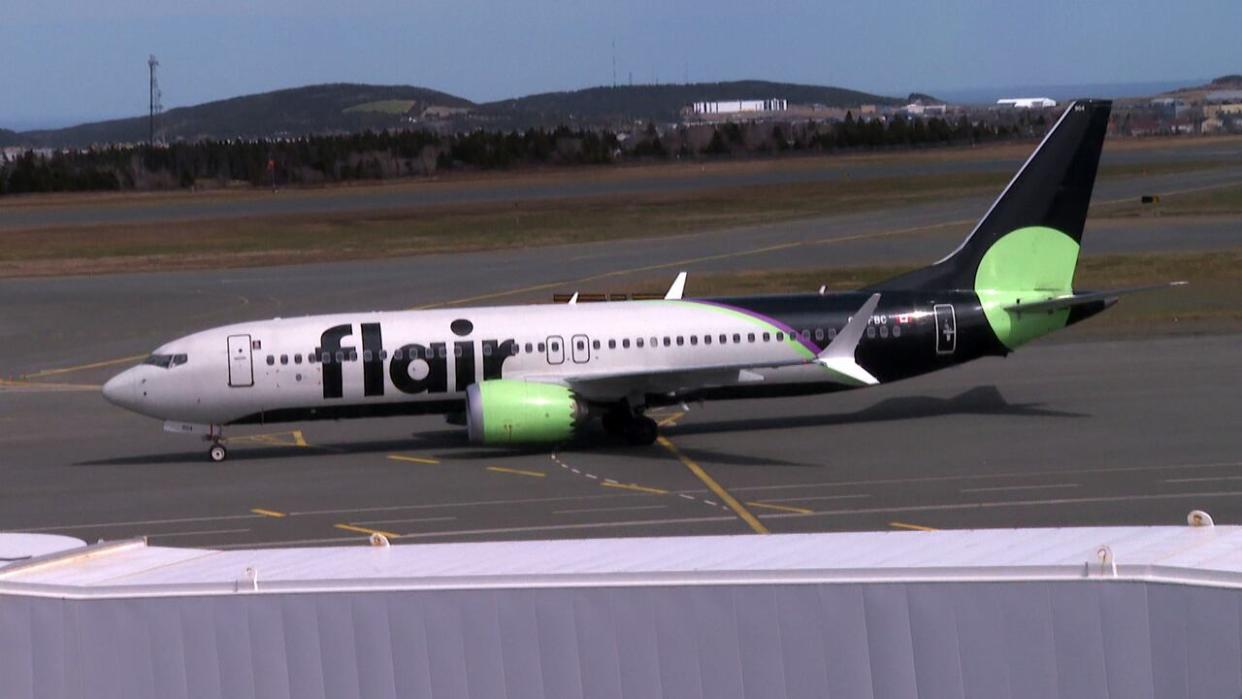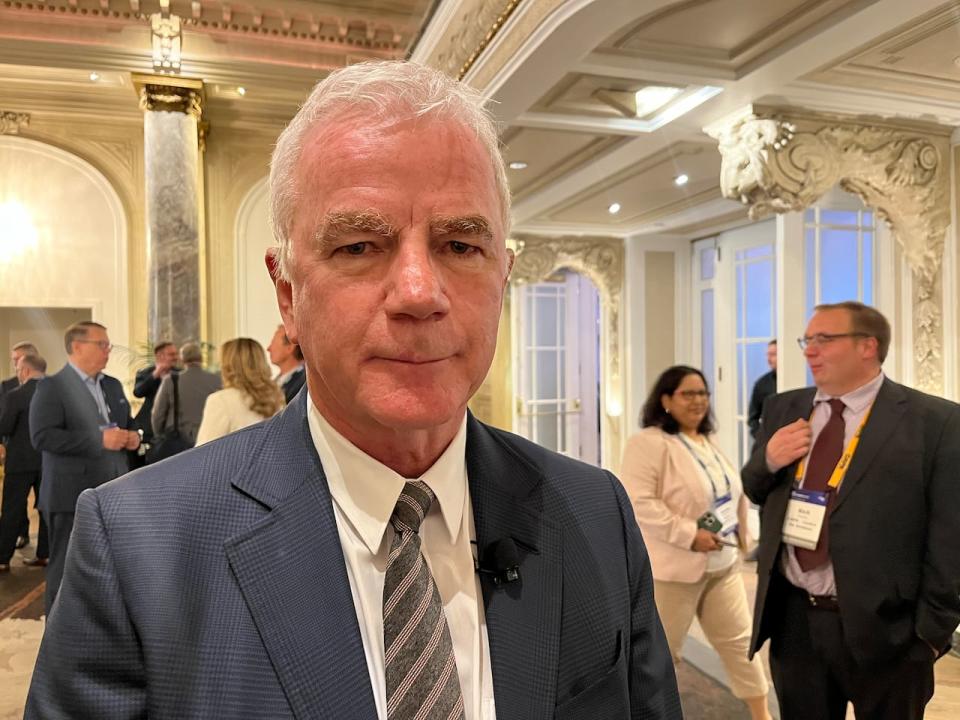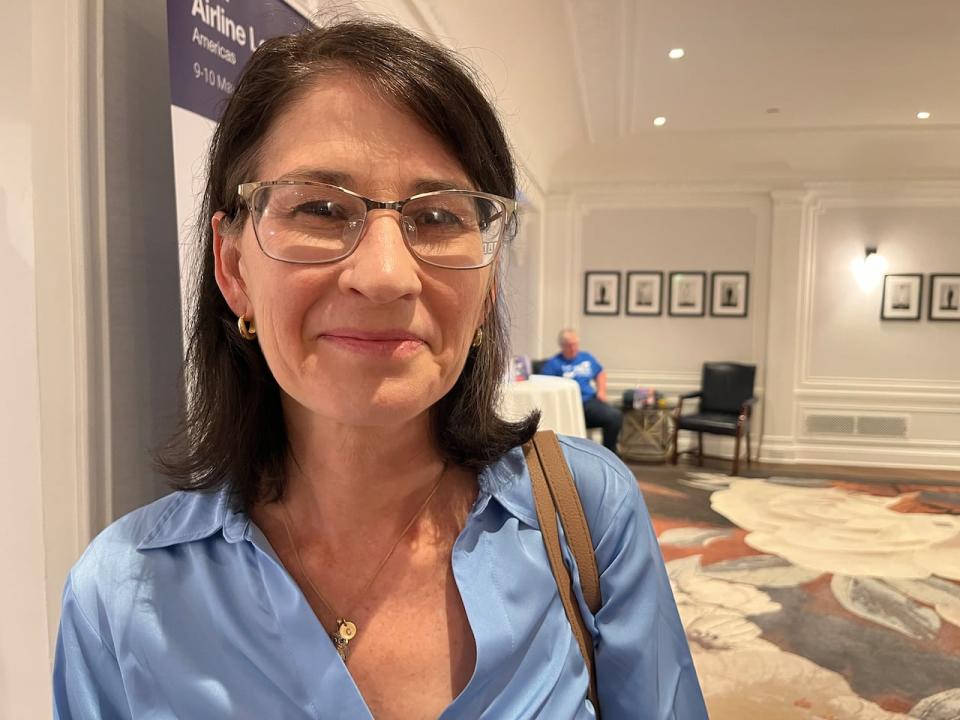Flair Airlines CEO bullish on future of discount airlines. Others aren't so sure

With Swoop folded into WestJet and Lynx folded altogether, Edmonton-based Flair Airlines has emerged as the only ultra-low cost carrier left standing in Canada.
Is CEO Stephen Jones nervous?
"Not at all, we're going to have a great summer," said Jones, speaking to CBC News on the sidelines of the CAPA Airline Leader Summit in Calgary this week.

Stephen Jones is the CEO at Flair Airlines. (Paula Duhatschek/CBC)
Others aren't so sure about the future of discount airlines.
While in Europe the ultra-low cost carrier model has allowed travelers to scoop up flights for about the cost of a pizza, the industry has struggled in Canada thanks in part to high, third-party fees and the country's low population base.
John Gradek, a lecturer in aviation management at McGill University, believes the months ahead will be a key test for Flair. The privately owned company will have to keep prices low enough to entice customers, but high enough to make money — all while avoiding getting flicked off the game board by larger players, he said.
"The game is going to be played sometime starting at the end of this month, beginning of June, to see the intestinal fortitude that Air Canada, WestJet and Flair have to fill their airplanes up and how low do the prices go to fill those airplanes," said Gradek.
Why ultra-low cost carriers struggle
Population is one major barrier to the success of ultra-low cost carriers in this country.
Compared to Europe or even the U.S., Canada simply doesn't have enough people to fill planes and support an ultra-low cost carrier, according to John Weatherill, chief commercial officer with WestJet.
"What we recognized with Swoop was that even with very low cost … the market just wasn't big enough to be able to stimulate the type of traffic they need to be successful," said Weatherill, speaking on a conference panel Thursday.

John Weatherill is the chief commercial officer with WestJet. (Paula Duhatschek/CBC)
Taxes and fees are another problem. Canadian airports, which are not-for-profit facilities, rely on airport improvement fees to generate revenue and some charge $40 or more.
At Westjet, for example, Weatherill said the business sold about 2.5 million tickets in 2023 with a base fare of under $100 — but had to absorb about $70 per ticket in fees and taxes.
"That makes it more difficult for airlines to put an affordable fare out into the market," he said in an interview with CBC News.
With Lynx out of the mix, McGill's Gradek said Flair has had some wiggle room to raise prices, but will have to be careful not to overplay its hand such that they're no longer enticing to budget-conscious customers.
Meanwhile, he said, the company will have to fend off larger players, who he said have the power to drop ticket prices temporarily to compete directly with the ultra-low cost carrier.
"What do you think happened for the last 10 guys who tried this?" he said.
"All kinds of carriers played this game of price differentiation and as soon as the big guys say 'That's it, we're done, goodbye, boom' — six weeks and they're history."
Flair has faced financial turbulence already. Earlier this year, The Canadian Press reported Flair was facing a seizure order from the federal government related to $67.2 million in unpaid taxes.
At the time, Jones told CBC News the airline was on track with a "mutually agreed-upon" payment plan with CRA.
The case for Flair
Working in Flair's favour, said analyst Lori Ranson, is the brand recognition that comes with being the only ultra-low cost carrier in the market.
"There's a lot of history of low-cost and ultra-low cost carriers not really doing well in Canada, but I think Flair is trying to change the narrative," said Ranson, senior analyst for the Americas with CAPA Centre for Aviation. "We just have to see how it's going to play out."

Lori Ranson is a senior analyst with CAPA Centre for Aviation. (Paula Duhatschek/CBC)
Part of their strategy, said CEO Jones, is to "swing" routes seasonally between domestic and international. In the winter, the airline focuses more on sun destinations and offers more Canadian routes in the summer.
"It will be 65 per cent domestic through the summer whereas through last winter we were 70 per cent heading south," said Jones, speaking on a conference panel, and adding that the airline plans to pick up more domestic routes left unfilled by Lynx's departure.
He also said the airline has benefited from a partnership with the Region of Waterloo airport in Ontario, which gave the airline temporary, exclusive rights to certain routes.
Despite the cost challenges that come with operating in Canada, Jones said the low-cost model has worked in similarly sparse Australia, and he believes there's no reason it shouldn't work here.
Onstage at the CAPA conference, Jones described the airline's biggest competition as "the couch" — meaning that he's not trying to coax travelers away from other airlines, but rather attract those who aren't flying at all right now because it's too expensive.
Asked about the future of the low-cost carrier model in Canada, Jones said there's plenty of interest and that his planes are "90 per cent full."
"We see the opportunity in getting more people off the couch … because affordability for travel in Canada has been a real problem," he told CBC News.

